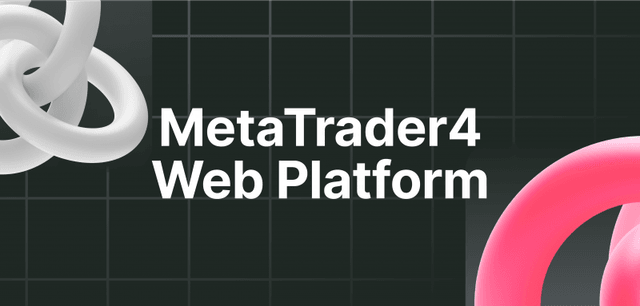Web API for MetaTrader*: How Does it Work?

MetaTrader powers most brokerages, but scaling on it manually doesn’t. As trade volumes grow, so do the inefficiencies: account setup, deposits, reporting—tasks that eat up time and invite risk.
MetaTrader APIs solve this by opening server-level access. With the right setup, brokers can automate operations, sync with CRMs and KYC tools, and build infrastructure that grows with the business.
This guide breaks down what the APIs do, how they differ, and how to integrate them, plus why adding platforms like cTrader can make your stack more resilient.
Key Takeaways
- The MetaTrader API is a backend toolkit that allows brokers to automate operations, integrate systems like CRMs, and truly scale their infrastructure.
- You'll find specific APIs (Manager, Server, REST, FIX) designed for distinct tasks, covering everything from back-office automation to custom app development and institutional connectivity.
- A successful API integration is a structured project that demands clear business goals, the selection of the correct API type, and rigorous testing.
What Is MetaTrader API?
MetaTrader APIs give your brokerage direct access to the platform’s backend. Instead of working through the MT4/MT5 terminals, they let your systems communicate with the server programmatically, handling trades, accounts, and data without human input.
Brokers use these APIs to automate tasks like onboarding clients, syncing trade data to dashboards, or integrating payment and KYC services. The result: faster operations, fewer errors, and infrastructure that scales without increasing headcount.
It’s important to see MetaTrader API for what it is: not a trading interface, but a tool for building and controlling your brokerage’s architecture. While traders use terminals, you use APIs to control what happens behind them.

What Can Brokers Do with the MetaTrader API?
A MetaTrader API let brokers run their operations without relying on manual input. With the right integration, your systems can trigger trades, manage accounts, pull data, and process deposits—all automatically.
This unlocks key advantages:
- Full client automation — from onboarding to withdrawals, via direct CRM and PSP integration.
- Cleaner execution — trades placed via API reduce human error and improve response time.
- Real-time analytics — pull live data into custom dashboards for risk control or performance tracking.
- Custom front ends — build web and mobile apps on top of MetaTrader, while keeping its backend engine.
Put simply, MetaTrader API is how brokers move from manual processes to true infrastructure. It’s the foundation for building fast, flexible, and scalable systems that support long-term growth.
Discover the Tools That Power 500+ Brokerages
Explore our complete ecosystem — from liquidity to CRM to trading infrastructure.
MT4 vs. MT5 API: Key Differences for Brokers
The choice between the MT4 and MT5 APIs is a key strategic decision for your operations. While MT4 certainly has a legacy of popularity, a pivotal move by MetaQuotes in early 2018 to halt new server licenses has cemented MT5's role as the only viable path for new brokerages and the definitive forward-looking choice for established firms.
The operational advantages of MT5 stem from several core differences.
MT4 runs on a legacy 32-bit, single-threaded architecture. It’s stable but limited: built for Forex, with fewer order types and slower processing under load. MT5, by contrast, is multi-threaded, 64-bit, and supports full multi-asset trading—Forex, stocks, futures, ETF CFDs—all from one server.
For developers, MT5 uses MQL5, a more advanced, object-oriented language. It supports asynchronous operations, custom event handling, and complex risk logic, giving broker tech teams much more flexibility than MQL4.
For established brokers on MT4, switching requires transitional layers. But for new entrants, MT5 is the clear choice—it’s faster, broader, and built for future growth.

Discover the 2025 strategic guide to MetaTrader 4 vs 5—expert insights to help brokerages, fintech leaders, and trading desks choose the right platform.
Primary Types of MetaTrader APIs
Brokers will use different APIs depending on the job at hand. Getting to know the primary types is the first step in choosing the right tool for your project.
Server API
Server API is your 'root access' to the trading platform. Written in C++, it offers the deepest level of control, allowing you to build custom server-side plugins for things like non-standard liquidity integration or advanced risk management logic. It's incredibly powerful but requires specialised development expertise.
Manager API
The Manager API is your tool for back-office automation. It programmatically controls the functions of the MT Manager terminal. Use it to automate client onboarding from your CRM, process bulk balance operations, or pull data for compliance reports. It’s the key to reducing your team’s manual workload.
REST and WebSocket APIs
These are the modern, web-friendly APIs for building custom applications. A REST API is perfect for executing commands and requesting data (e.g., "get this client's trade history"). WebSocket provides a continuous, real-time market data stream, ideal for live price feeds. Developers frequently use these with languages like Python or JavaScript.
FIX API and MT4 Integration
The FIX protocol is the universal language of institutional finance. A FIX API bridge allows your MetaTrader server to communicate with institutional liquidity providers, hedge funds, or other platforms. It’s essential for brokers looking to cater to professional traders or manage sophisticated hedging strategies.
How MT4/5 Web API Powers Broker Integration
MetaTrader’s Web API offers a simpler, more modern way to integrate with MT4 and MT5—without diving into low-level C++ or legacy terminal interfaces. It works over HTTP protocols (REST), so your developers can interact with the platform using familiar tools and programming languages.
Think of it as an integration bridge: one side connects to your systems (CRM, back office, front end), the other talks to the MetaTrader server. You send a request (e.g., create account, pull balance, place trade), and the API returns clean, structured data—usually in JSON.
The Web API is stateless, platform-agnostic, and ready for high-throughput use cases. It’s especially useful for brokers who want to connect multiple systems without building full server-side plugins.
Core Features of MT4/5 Web API
A robust Web API should provide the key building blocks for a scalable infrastructure:
- Authentication & Session Control – Secure token-based access and session handling
- Error Handling – Standardised, readable responses make debugging fast
- Structured Data – JSON-formatted outputs ensure easy parsing across platforms
- Pagination & Streaming Support – Ideal for handling large datasets like trade history
- Unified Requests – Same syntax for MT4 and MT5, making it easier to support both
Benefits for Brokers and Developers
A Web API dramatically accelerates development and integration. It gives you the freedom to connect your core trading server to any other system, empowering your team to build custom front-ends and deliver a unique user experience while letting MetaTrader handle the backend heavy lifting.
Benefits for Traders and Clients
Traders benefit from Web API indirectly—but meaningfully. Real-time pricing, faster execution, seamless deposits, and tighter platform integrations all improve their experience. Plus, APIs open the door to features like custom analytics, third-party tool integrations, or fully branded trading interfaces.
As of 2025, the era of MT4's dominance has ended. According to a Finance Magnates Intelligence report, MetaTrader 5's trading volume has officially surpassed MT4's for the first time, making it the new de facto industry standard.

Implementing MetaTrader API: Step by Step
Integrating with the MetaTrader API isn’t plug-and-play. To avoid downtime, security issues, or broken workflows, brokers need a clear implementation plan. Here’s how to do it right:
1. Define Integration Goals
Start with a concrete problem. Do you want to automate KYC flows? Sync trades to a risk dashboard? Build your own client portal? Every API decision should solve a specific operational challenge, not just “enable automation.”
2. Choose the Right API Type
Your use case will determine the tool:
- Back-office automation → Manager API (often via Web API)
- Custom UI or trading apps → REST/WebSocket APIs
- Institutional bridging → FIX API
- Deep server control → Server API (requires C++ team)
Don’t try to use everything. Pick what matches your goals and internal skillset.
3. Plan for Security and Deployment
Treat your API like infrastructure, not a side tool. That means:
- Secure authentication flows
- Data encryption (TLS)
- Rate limits and abuse protection
- Dedicated staging and production environments
- Low-latency, high-uptime hosting
4. Develop and Test in Isolation
Never build directly on production. Use sandbox environments to simulate real-world loads, test edge cases, and audit for latency or data mismatches. Integration success depends on reliability under pressure—not just “it works on dev.”
A turnkey Forex broker solution can provide a fully integrated infrastructure from the start to help your business bypass all the complexities.
Have a Question About Your Brokerage Setup?
Our team is here to guide you — whether you're starting out or expanding.
Why Multi-Platform Support Strengthens Broker Resilience
But what if the platform itself is the limitation? While the API unlocks MetaTrader’s potential, smart brokers build for resilience. Relying on a single technology provider, no matter how dominant, creates business risk.
That’s why growing firms increasingly run MetaTrader alongside other platforms. By supporting options, you can route different client segments to the environment that fits them best—scalpers to cTrader, algo traders to MT5, for example.
More importantly, you reduce dependency on one vendor and keep flexibility to adapt. That’s how brokers stay stable as the market (and technology stack) evolves.
Integrating Web API and cTrader for Scalable Broker Infrastructure

With cTrader’s open architecture and support for Web APIs, brokers can:
- Connect CRMs and onboarding systems
- Integrate payment processors, copy trading and KYC tools
- Build branded front ends for web, mobile, or desktop
- Sync pricing or risk data across platforms
B2BROKER’s White Label cTrader solution accelerates this. It gives you a ready-made cTrader environment, API access, and seamless integration with existing systems. Your team can launch fast, customise deeply, and focus on growth.
Because the Web API supports standard HTTP requests, your devs can use familiar frameworks to control platform functions, pull data, or trigger actions across both MetaTrader and cTrader.
B2BROKER’s MetaTrader Server Support and Maintenance Services

Even with a successful API integration, MetaTrader still needs constant care: uptime, security, performance tuning, and fast response to server-side issues. That’s not a job for a lean in-house team, as it requires 24/7 infrastructure oversight.
B2BROKER offers comprehensive MetaTrader server setup, hosting, monitoring, and technical support. You keep full control of the business layer, while we handle the technical foundation that powers it.
Need help choosing the right API stack or evaluating cTrader as part of your trading infrastructure?







